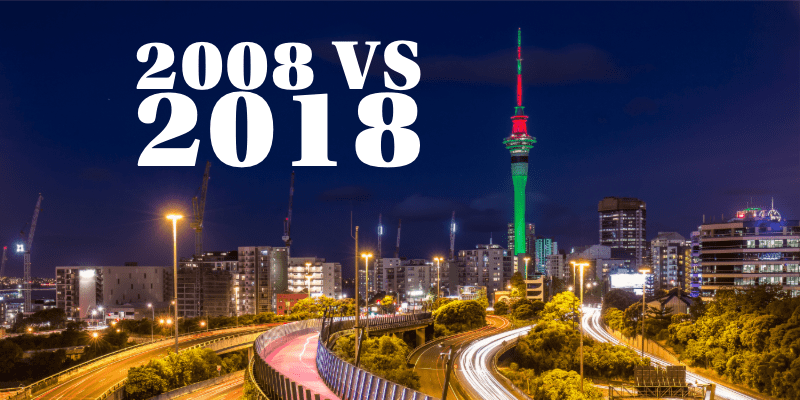
🕑| 3-minute read
Six competitive cities in New Zealand have been compared to Australia’s five main centres in a new PwC report which reveals income and cost of living impacts.
Auckland stands out as the only city in our sample to experience falling discretionary income. In all, discretionary income fell about $5,000 a year in real terms between 2008 and 2018 (approximately 5.8 per cent of annual gross household income).

While the public focus has centred on housing costs of late, Auckland faces three headwinds simultaneously:
- Income growth for the median household is sluggish compared to other cities.
- Basic expenditure is increasing faster in Auckland than elsewhere.
- Auckland house prices have risen more than all cities in Australasia, with the possible exception of Sydney.
Median wages are not keeping pace with economic growth (Figure 1). Auckland has experienced strong economic growth since 2012, growing at an average of 2.9 per cent (real) per annum (compared to 2.1 in the rest of New Zealand).
Over the same period, wages grew at an average of 0.87 per cent per year (rest of New Zealand, 2.1 per cent).
Median wage growth in Auckland trails every other New Zealand Growth City, raising questions about who is benefiting most from Auckland’s growth.

To a median household looking in, the Auckland proposition is grim. On a median household income, a bank may reasonably lend enough for a house priced at $467,000 (about 55 per cent of the median).
This is enough to buy a house on the outskirts of the city or perhaps in a Supporting Growth Area such as Pokeno.
If Auckland is not New Zealand’s internationally competitive city, there won’t be one.
Mortgage payments have risen some 15 per cent for a new median household since 2008 in real terms. With the exception of Sydney, no other city in our study experienced a meaningful increase.
After deducting basic expenditures and these hypothetical housing costs, the median household is left with just $309 per week.
Aucklanders are leaving Auckland. Against this backdrop, a net 24,984 Aucklanders left New Zealand’s largest city between 2012 and 2016 (Figure 2). That is enough to offset all natural growth (births minus deaths) in the city.

By contrast, international migrants appear less responsive to changes in discretionary income – perhaps because they are dissimilar to the median household.
Auckland’s ambition will be stifled if these growth dynamics persist. Existing difficulties funding infrastructure, for instance, are made more difficult in the face of falling relative wages, rising housing costs and higher basic expenditure.
Auckland needs an Economic Competitiveness Agenda (ECA). An ECA should target faster income growth and lower living costs while maintaining other critical elements of urban competitiveness such as environmental sustainability and quality of life.
Only when Auckland improves its economic standing, through faster income growth and lower living costs, will it be able to attract and keep the type of labour the city needs to compete internationally.
This benefits both Auckland and New Zealand, with higher incomes in Auckland increasing the capacity of public expenditure across the country. In many ways, overcoming the headwinds in Auckland is central to New Zealand’s economic prospects.
Source: PWC
P.S. Do you know of other people that will find this article useful? Please share it on social media. Thank you!